-
Otto Lilienthal flying one of his gliders

Before Lilienthal people had no clear idea of what the shape of a heavier-than-air machine should be. It was he who developed the modern shape: a pair of wings, with a smaller pair of horizontal stabilizers aft and a vertical fin, all held together by a transverse member. His aircraft were all hang gliders, monoplanes as well as biplanes. The Wright brothers acknowledged their debt to him in developing their own aircraft. Lilienthal died in 1896, as a result of injuries sustained from a crash of one of his gliders. In the Lilienthal glider, the pilot achieved control by shifting his weight around relative to the glider. This method is used still in modern hang gliders.
-
The first flight of the Wright brothers, 17 December 1903

Orville, the pilot, is lying flat on his stomach on the lower wing. Wilbur can be seen running by the side of the Flyer. The Flyer was a "tail first" or canard design, where the horizontal stabilizer is placed ahead of the wing. Careful observation reveals that the propeller is whirring away above and just ahead of the pilot's head.
The Wright brothers are credited with having flown the first powered aircraft. This is because their Flyer was the first aircraft to lift off under its own power and sustain flight thereafter; and it was controllable by purely aerodynamic means, as most aircraft today are. (Remember, Lilienthal's gliders were not powered and they were controlled by the pilot shifting his weight around.)
-
Classic biplane of the early era.

The big radial engine at the nose is noticeable. The cockpit is open. The elevator and rudder are large compared to the horizontal and vertical tails. This was typical of the early biplanes, partly because the low flight speeds required large control surfaces. The skin is fabric. The landing gear is of the tailwheel type.
-
Westland Wapitis in formation.
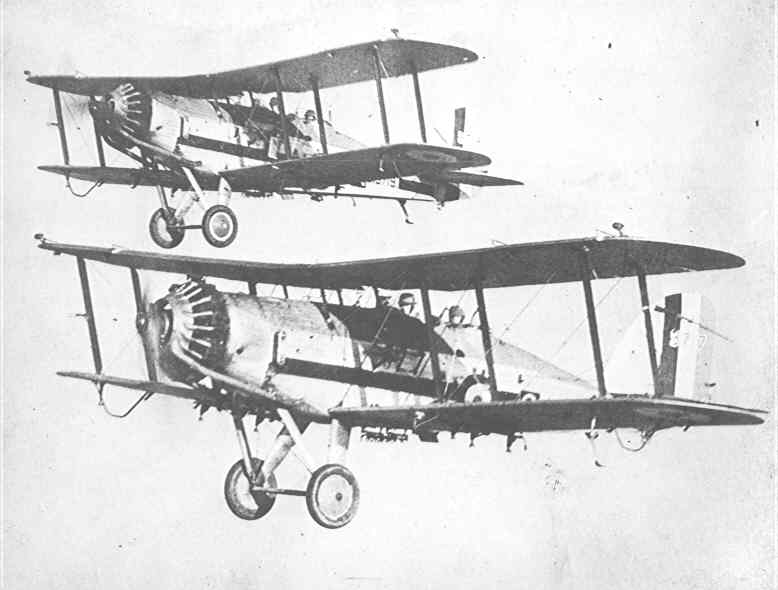
See how the crew are exposed to the wind. Also much in evidence are the braced wing structure, the large, fixed main wheels and the radial engine.
-
A Fokker triplane.

Baron von Richtofen, the "Red Baron", flew such an aircraft in WW I. Triplanes soon fell out of favour because of the high drag generated by the multitude of wing bracings.
The aircraft of the early era were made of wood with fabric covering, because the metals then available were too heavy. With these materials it was not possible (at best it was extremely difficult) to make a sufficiently strong monoplane wing that would withstand the bending moment imposed at the wing root (the region where it joins the fuselage). The biplane design got around this atructural difficulty because the double deck wing, together with all the supporting struts and braces, effectively acted as a single beam and could successfully withstand the bending moment at the root.
-
An amphibious aircraft.

A mono plane of the early era. The cantilever wing is braced externally. This is better than the "bird cage" bracing of many biplanes, but still produces a lot of drag. The radial engine marks out this aircraft as being a pre-1930s design.
-
The famous Piper Cub.

The Cub is a classic aircraft, with with fixed tail-wheel type landing gear and braced mono plane wing. It is very popular even today with individuals and flying clubs. The "parasol" high wing of the Cub is typical of small mono planes, especially those with fixed main wheels. This layout allows the pilot to see the ground clearly and gives good aerodynamic performance. The skin is still fabric, but the engine is no longer radial, so the frontal area is reduced, as is the drag. -
The Cessna 182
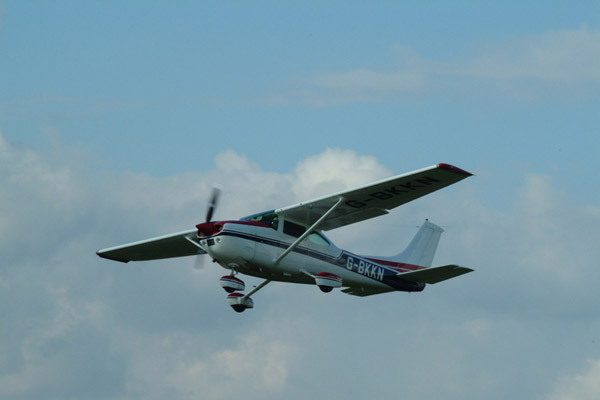
Somewhat larger than the Piper Cub and almost equally popular, it sports some more modern features than the latter. Most noticeable are the tricycle landing gear and metal skin. Since metal skins can take some of the structural load, the wing is now stronger and requires less of external support.
As a rule, aircraft meant to fly at low speeds (less than 0.5
Mach) have wings with little or no sweepback, for example the
Douglas DC-3 Dakota. Aircraft that fly faster but yet remain
the subsonic range have wings of moderate sweepback (30-45
degrees). A prime example is the Boeing 747, with a cruising
speed of about 0.9 Mach.
Aircraft that fly at supersonic speeds have highly swept
wings that often metamorphose into delta wings. The only two
supersonic transport aircrafts to date, the Anglo-French
Concorde and the Russian Tupolev Tu-144, both follow the rule, as
do military aircraft. But there can be gross exceptions, such
as the F-104 Starfighter. See the military aircraft section.
-
Subsonic
-
The Douglas DC-3 Dakota.
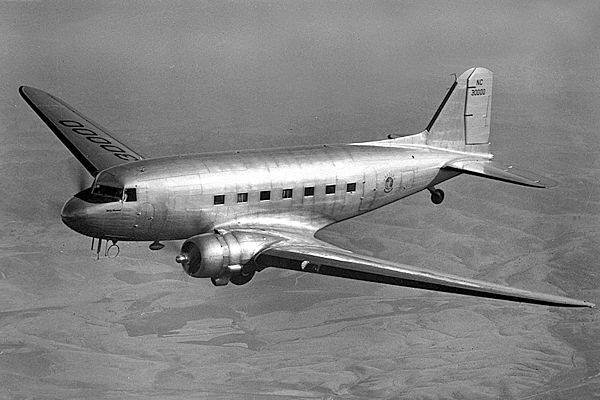
A classic transport/passenger carrier from the early 1940s, continues to be used even today. The aerodymanics is superb. Observe how the wing blends smoothly into the body and the engine nacelles merge grdually into the wings.
-
The Tupolev Tu-114, fastest prop-powered aircraft

This Russian aircraft is the fastest prop-powered aircraft. Four huge NK-12 turboprop engines (of about 60 MW power each!) drive four sets of four-bladed contrarotaing propellers to give this clean-featured aircraft its speed.
-
The Boeing 747 - ruling queen of the skies
 Clean aerodynamic design
Clean aerodynamic design
-
Sporting winglets!
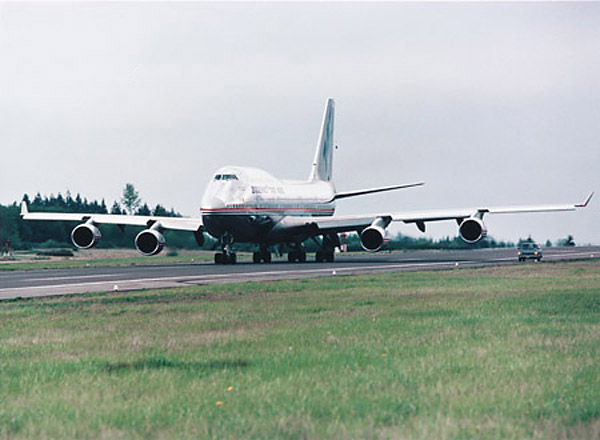
The B747, which virtually symbolizes air transportation today, is aerodynamically a very efficient aircraft. New enhancements such as the tip winglets, add to this efficiency by helping to reduce drag and thereby fuel consumption.
-
The Boeing 727 : an aircraft with three engines
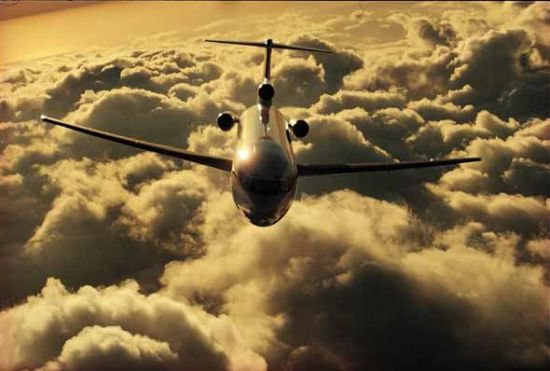
The B727 is a medium range, medium size transport aircraft that has three turbofan engines. Note, in this frontal view, how the wings bend upward from root to tip due to the loads imposed upon them in flight.
As is the norm in three-jet engine aircraft, one engine is mounted in the plane of symmetry of the aircraft, usually at the junction of the fin with the upper fuselage. This is also true of aircraft like the Douglas DC-10 and the Lockheed L-1011 tristar. What is somewhat unusual is the positioning of the two remaining engines. Locating them on the rear fuselage means a) that the horizontal tail has to be placed on top of the fin, to keep it out of the engine exhaust and b) the aircraft becomes tail heavy, to compensate for which the wings have to be located fairly far back along the fuselage in order to maintain lingitudinal balance.
-
The Douglas DC-3 Dakota.
-
Supersonic
-
The Concorde supersonic passenger aircraft taking off

The withdrawal of the last Concorde from service marked the end of an era. One of the most graceful aircraft ever built, the Concorde was, perhaps, ahead of its time. It had a cruising speed exceeding Mach 2 and could carry 100 passengers. The most notable features of this aircraft are the small aspect ratio curved wings (which are actually a smooth blend of wings and strakes) and a fuselage nose section that would droop down in order to allow better pilot visibility during take-offs and landings.
-
The Concorde supersonic passenger aircraft taking off
-
Fixed geometry
-
The Sukhoi Su-27: boasting great aerodynamics

One of the most aerodynamically advanced fighter aircraft today, this Russian aircraft is capable of almost incredible manouevres. The very prominent strakes ahead of the wings help it to attain very good performance at high angles of attack.
-
A supersonic aircraft with unswept wings

In the picture, the nearest aircraft is a F-104. The aircraft on the far left is a Northrop F-5, while that behind it is a Northrop F/A-18. The F-104 and F-5 are aircraft from the 1960s. The F/A-18 is a 1980s aircraft and is in service with the US Air Force.
The Lockheed F-104 Starfighter was an exception to the rule that supersonic aircraft should have highly swept wings. The F-104 could fly at speeds exceeding Mach 2, although as a fighter aircraft it was not very successful. The primary reason was that its wings were too small in area to give it good manoeuvrability (that is, the ability to turn quickly). Due to its small wings the aircraft also needed very long runways to operate from.
Compared to the F-104, the F/A-18 has larger wing area. Also its strakes allow it to fly at the higher angles of attack needed in tight turns and short takeoffs and landings. This allows the F/A-18 to be operated from aircraft carriers. The F-104 could never have been operated from aircraft carriers.
Another point of difference is in the design of the cockpit canopies. The pilot of the F-104 can see only straight ahead, with very little side visibility and no rear visibility. By contrast, the pilot of the F/A-18 has an all-round view, thanks to the "bubble" canopy.
-
The Northrop F/A-18 supersonic fighter/ground attack aircraft

The wings, of fairly large span and only moderate sweepback, are aided by the large strakes in achieving a high lift coefficient. This gives good low-speed and turn performance. Missiles are mounted on wing tips, under wings as well as on fuselage underbelly. The large pods under the wings are external fuel tanks. The opening just ahead of the engine intake is the "boundary layer bleed" that diverts the slow moving boundary layer and prevents it from entering the engine.
-
The Swedish Viggen supersonic fighter

This wing planform is at the other extreme from the F-104 Starfighter : low aspect ratio double delta wings, with no horizontal tail but with canards. The trailing edge control surfaces on the canard are like conventional elevators; those on the outboard portion of the wing are ailerons and those on the inboard portion are flaps. In this aircraft the canards most likely act as true stabilizing surfaces (a "forward horizontal tail") and not as vortex generators for the main wing.
-
The Sukhoi Su-27: boasting great aerodynamics
-
Variable geometry
-
Variable geometry aircraft try to be efficient at all
speed regimes in their flight envelope. They try to do
this by varying the sweepback of their wings in
flight. There is a price to be paid for the increased
efficiency in terms of the additional weight and
complexity of the variable sweep mechanism.
-
The Grumman F-14 Tomcat supersonic fighter with wings
extended ...
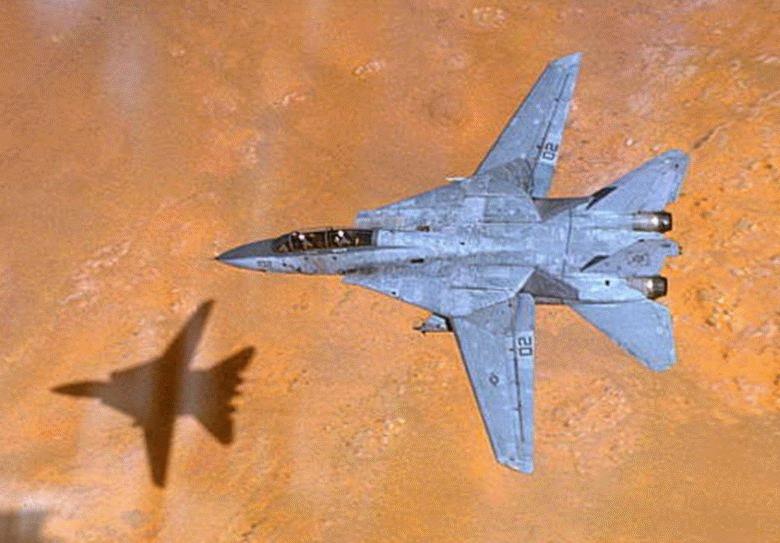
This is the configuration for low-speed flight. In such flight wings of large aspect ratio are efficient.
... partly swept back ...

... and swept fully back.
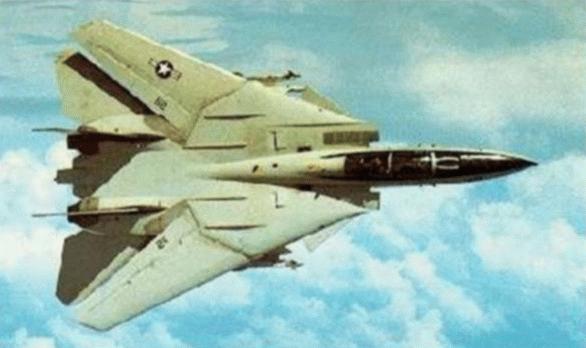
The wings, here swept back about 70 degrees, are now most efficient for flight at speeds above Mach 2. The maximum speed of this aircraft is Mach 2.37 at an altitude of about 11,000 m
Here is a schematic diagram of the F-14.

-
The Grumman F-14 Tomcat supersonic fighter with wings
extended ...
-
"Stealth"
-
The F-117 from close quarters ...

Although its nosewheel has collapsed following a heavy landing, its an F-117 stealth fighter nevertheless! The aim of "stealth" is to make the aircraft invisible to enemy radar. This is achieved through a) the use of non-reflecting material such as carbon composites and suitable surface paints and ii) the avoidance of large expanses of smooth surfaces. That is the reason for the rather angular, bat-like shape of this aircraft.
-
... and in company with a B-2 "stealth" bomber
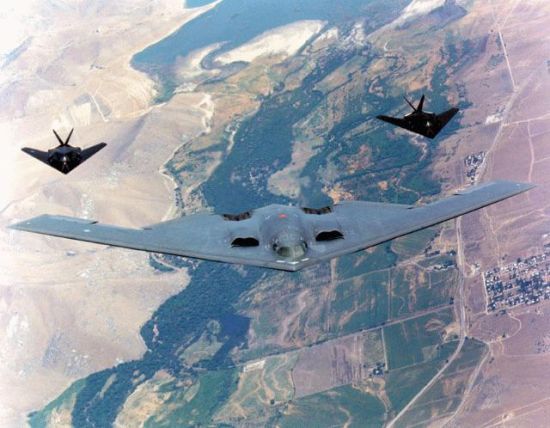
The angular features of the B-2 are similar to that of the F-117. By the way, the "flying wing"-like layout of the B-2 is reminiscent of the Northrop YB-49 and XB-36 prototypes.
-
The F-117 from close quarters ...
-
The Boeing 747 taking off

A close look at the wing leading edge shows the slats drooping down. The take-off thrust of the B747 is about 25% of its take-off weight.
-
The Boeing B-52 bomber taking off
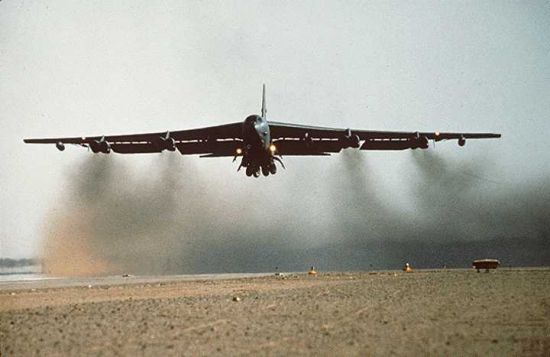
All four sections of the trailing edge flaps are extended to the fullest to get the maximum possible lift coefficient. The behaviour of the exhaust from the eight turbojet engines is noteworthy : the smoke turns sharply towards the ground on leaving the aircraft. This means that the air, flowing past the wings, is turned downward too. This air which is pushed downward by the wing then exerts an upward force on it, which is the lift.
-
The Douglas DC-4 touching down.

Note the well-extended trailing edge flaps. These are not full span, since the outboard portions are taken up by the ailerons. Unlike its smaller sibling the DC-3, the DC-4 sports a tricycle landing gear.
-
Two of the greatest flying machines ever made!

A specially modified B747 takes off with the Space Shuttle on its back. The Shuttle would be released from its carrier at a pre-determined altitude and speed, and allowed to glide back to earth. During the development of the Shuttle, this was the method used to test its low-speed flight characteristics. The Shuttle is also transported in this way.
-
STOL and VTOL
-
The Swiss Pilatus PC-6 STOL aircraft taking off
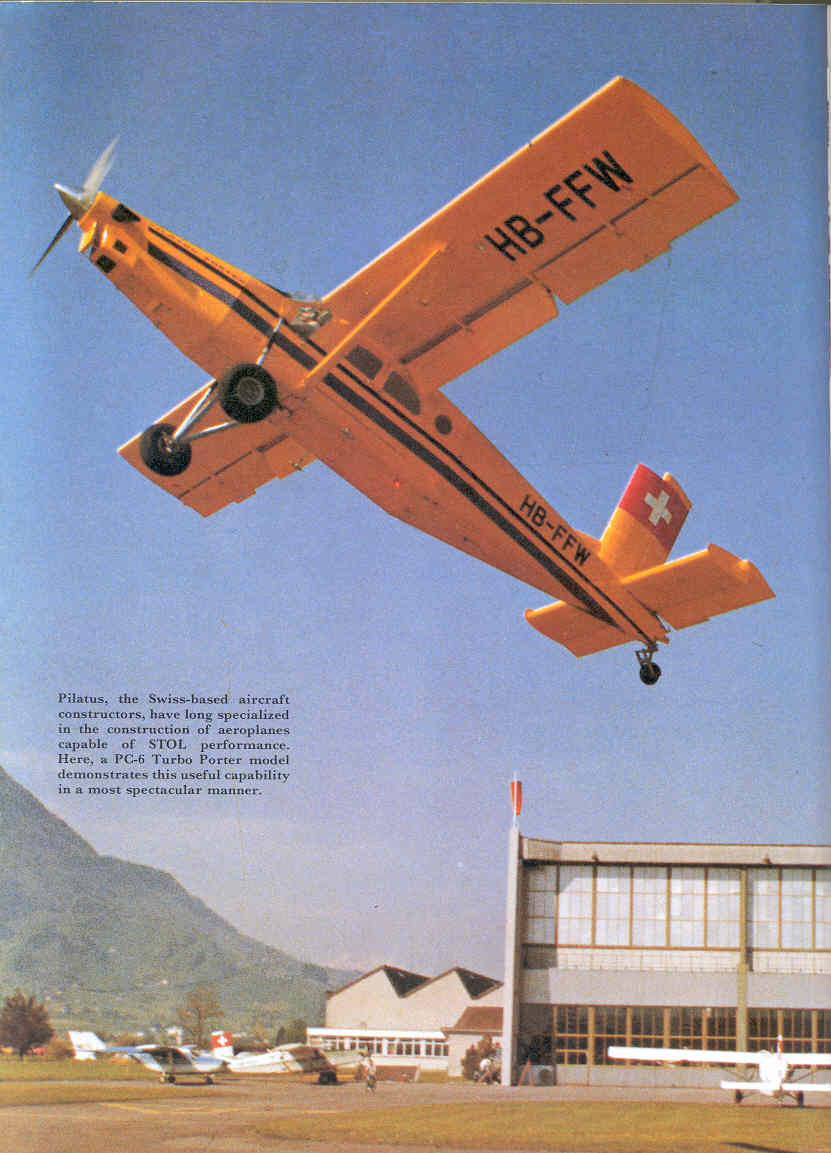
Low-speed STOL aircraft like this one achieve their goal with the help of a powerful powerplant and high-lift devices. Here the deflected trailing-edge flaps are very much in evidence as the aircraft attempts to climb out over the hills close by. Such STOL aircraft are very useful in countries like Switzerland, where airfields are often closely hemmed in by hills.
-
The Sea Harrier V/STOL aircraft

This is the Sea Harrier V/STOL fighter aircraft, which gets its V/STOL capability by "thrust vectoring", that is, actually deflecting the jet exhaust downward. It is a popular aircraft for use from aircraft carriers, in spite of it not being supersonic.
-
The X-22 V/STOL aircraft

Here is another example of thrust vectoring, this time using swivelling propellers. This is still an experimental/research aircraft.
-
The Swiss Pilatus PC-6 STOL aircraft taking off
-
Human powered flight!

This is Bryan Allen piloting (and powering!) the Paul MacCready-designed Gossamer Albatross during test flights before the record-setting attempt across the English Channel.
-
The Lockheed SR-71 Blackbird
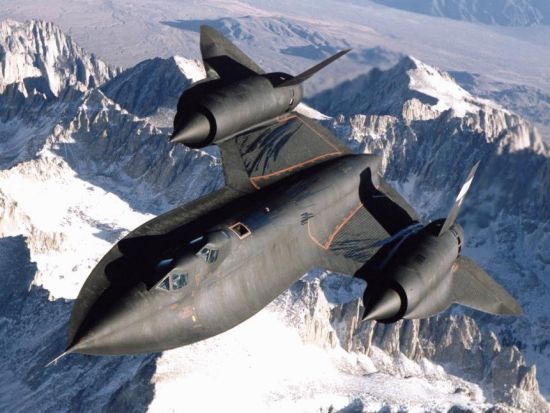
This reconnaisance (i.e. spy) aircraft is capable of speeds greater than Mach 3 and altitudes close to 30,000 m. The high speeds cause significant aerodynamic heating, due to which aluminium alloys lose their strength. The hottest parts, namely the front fuselage and the leading edges of the lifting surfaces, are made of special alloys. The wings are small but at the high cruise speeds of this aircraft they produce the desired lift. Not having a horizontal tail helps to reduce drag. The almost sharp platform-like projections on either side of the fuselage are strakes which help to augment the lift at low speeds, when the aircraft necessarily has to fly at large angles of attack. The strakes also serve to delay flow separation from the wings at high angles of attack.
-
The Rutan Voyager flying around the world

This is Burt Rutan's Voyager on its non-stop flight around the world, which it completed without refuelling. The long slender wings are aerodynamically efficient for low-speed, fuel efficient flight. The design bears the Rutan stamp: tail-first, pusher prop. Although, in this case, there is a tractor prop as well.
To learn more about the Voyager, lookhere
-
The Avro Vulcan bomber showing off its unusual layout.

This is the Vulcan bomber built by the British Avro aircraft company, now defunct. This is a classic "tail-less" design, in which the horizontal tail (but not the vertial one!) is sacrified in the interests of low drag. For maintaining longitudinal stability the wing then has to have a large chord in relation to its span, and delta-like planforms are the result.
-
The Northrop YB-49 Flying Wing bomber prototype

Quite an unusual design, this one. No horizontal tail, no fuselage even! The wing is all, or almost all. It was intended as a bomber, but the US Air Force finally decided against it, chiefly because of its unconventional looks. The YB-49 has a predecessor, the XB-36, which was propeller powered and met a similar end. However, the soundness of this design concept has been vindicated in the B-2 "stealth" bomber.
-
The Sukhoi S-37 prototype in flight

Here's a futuristic aircraft. It has canards and wings that are swept forward. The aerodynamic benefits of forward sweep over sweep-back are well known. However, the forward swept wing suffers from a severe aeroelastic limitation, which may only be overcome with advanced structural design using the new composite materials now available. The S-37 makes extensive use of composites.
Shown below are the layout drawings of aircraft for a variety of purposes. The aim of presenting these drawings is to compare and correlate shape with function and speed of flight.
-
Schematic: The DeHavilland C6 Twin Otter low speed transport
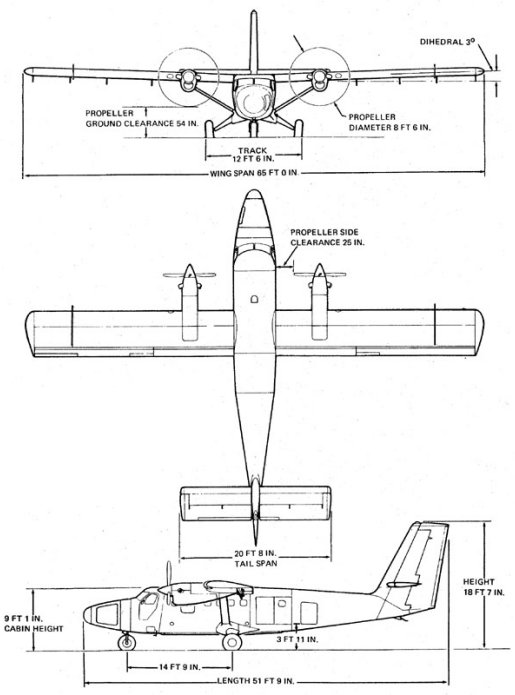
The wings and horizontal tail jut straight out of the fuselage. Also, the wings are long and narrow : high aspect ratio, so to say. That the aircraft is propeller powered, has braced cantilever wings and fixed undercarriage means that its top speed is not likely to exceed 0.3 Mach.
-
Schematic: The Boeing B747 wide-bodied transport aircraft

The Boeing 747 cruises at a speed of about 0.9 Mach. This makes the sweepback on the wings and tail necessary in order to delay the transonic drag rise. The winglets at the wing tips help to reduce induced drag.
-
Schematic: The Anglo-French Concorde supersonic transport aircraft
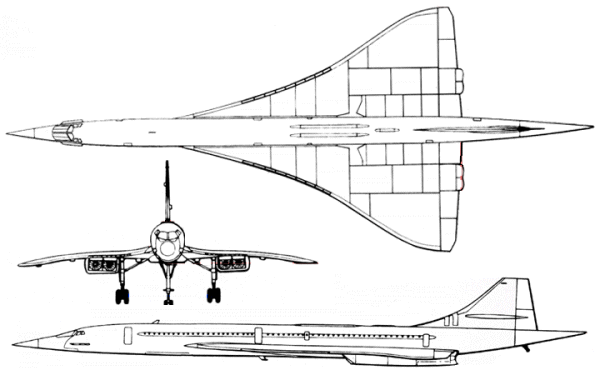
The Concorde is one of the most graceful aircraft ever built. The elegantly curved leading edge of the wing is actually a combination of strake and delta wing, allowing cruising at more than Mach 2 as well as taking off and landing at reasonably slow speeds. The strakes help at low speeds by producing the vortices that enhance lift over the main wing. Note how, in the fromt view, the wing appears to droop downwards. The wing is flexible, and the tips will move noticeably upwards when the aircraft is airborne.
-
Schematic: The Grumman F-14 supersonic fighter

The F-14 fighter has a variable sweep wing. Thw wing sweep may be changed in flight to adapt to the speed at which the aircraft is flying. At low speeds, the wings are fully extended, increasing the aspect ratio and therefore the maximum lift attainable. At supersonic speeds of more than Mach 2, the wings are fully swept back (about 70 degrees) to achieve low drag.
-
Sukhoi SU-37 experimental fighter
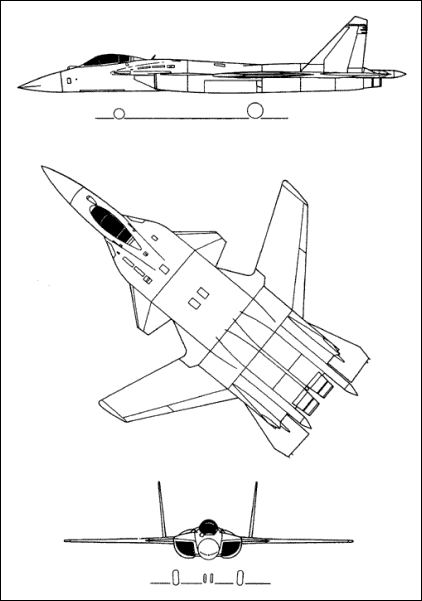
-
The B747 cockpit

-
The cockpit of the General Dynamics F-16 supersonic fighter

Aircraft cockpits have evolved alongwith aircraft. The earliest cockpits were open, with perhaps two or three instruments to aid the pilot. The modern cockpit is comfortable, if not exactly spacious, and boasts of a huge array of instruments and switches.
-
Classic main + tail rotor configuration

-
Twin main rotor configuration

-
Hand stitching fabric skins

The skins of the earliest aircraft were made of strong but light fabric that was painted over to make it impervious to air. In this picture women stitch on the fabric to the elevator of an aircraft. The structural details are clearly visible through the fabric because it has not yet been painted over.
-
Making propellers

Here are four bladed, fixed pitch propellers being hand finished. This picture is surely from the early days. Today, fixed pitch props are used only on the smallest and most inexpensive aircraft such as the Piper Cub, and almost all are two bladed.
-
A Boeing 747 being built
-
The upper part of the mid-fuselage segment

-
The front fuselage and cockpit

-
Attaching an engine to the wing
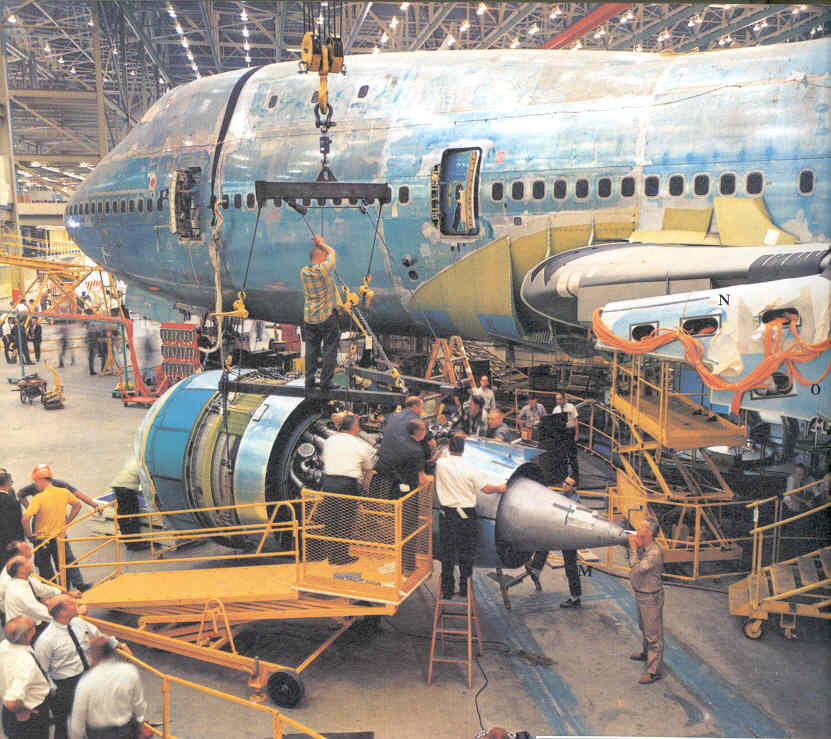
-
McDonnell Douglas DC-10s coming to life
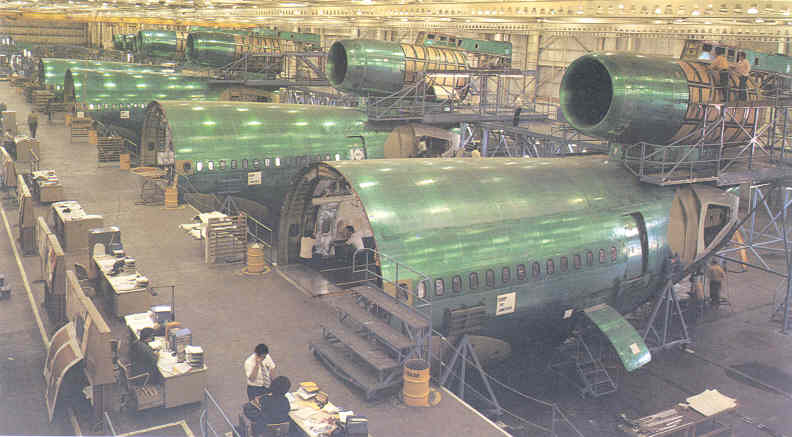
Rear fuselage segments of DC-10 aircraft being built. This is a three engine aircraft, with one engine on either wing and a third one on the upper fuselage, just below the fin. In this picture the nacelle for this third engine is being worked on.